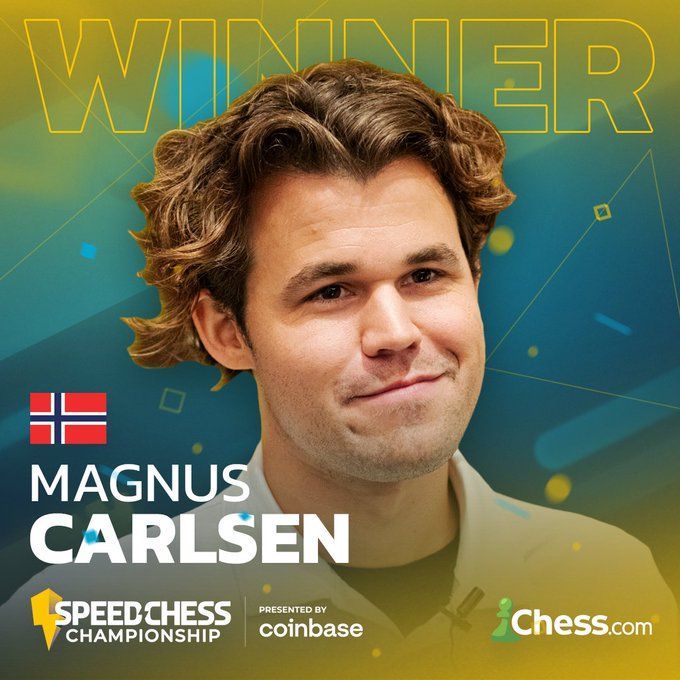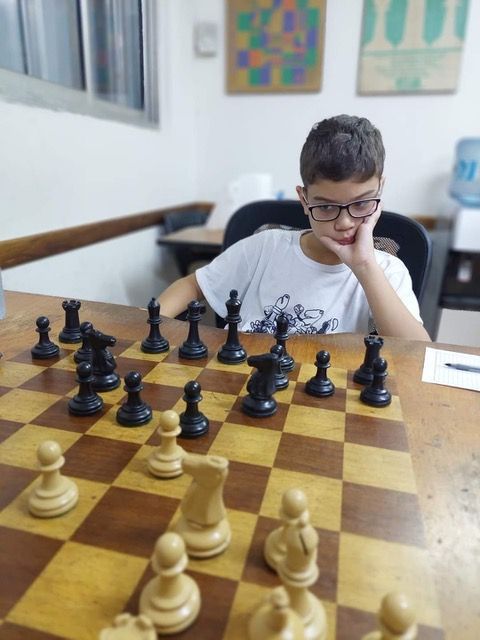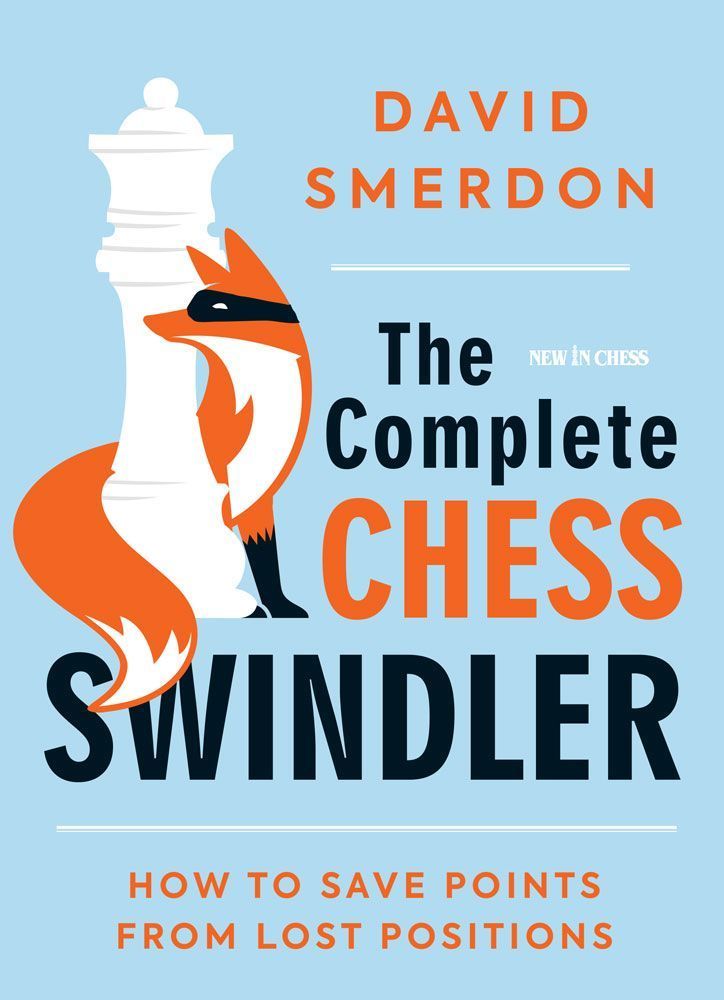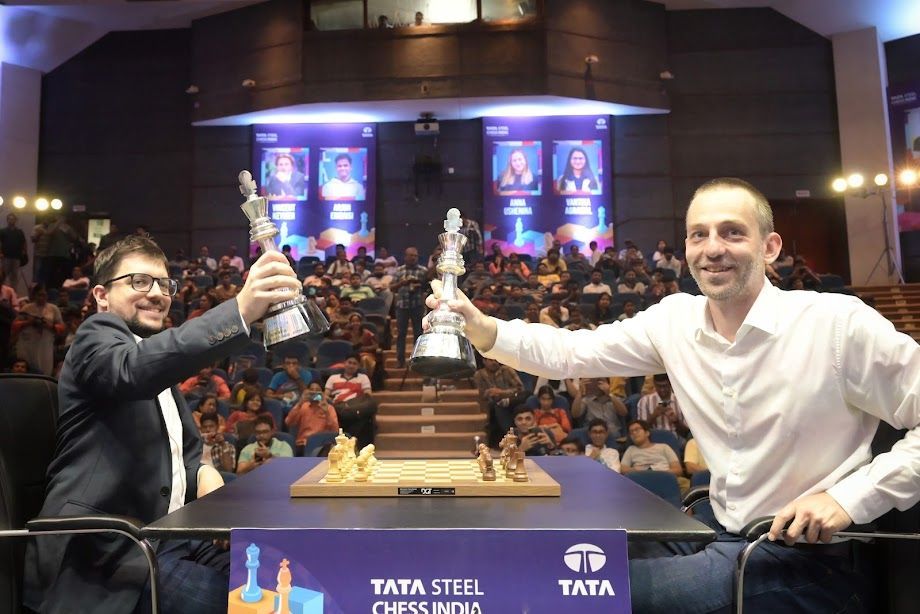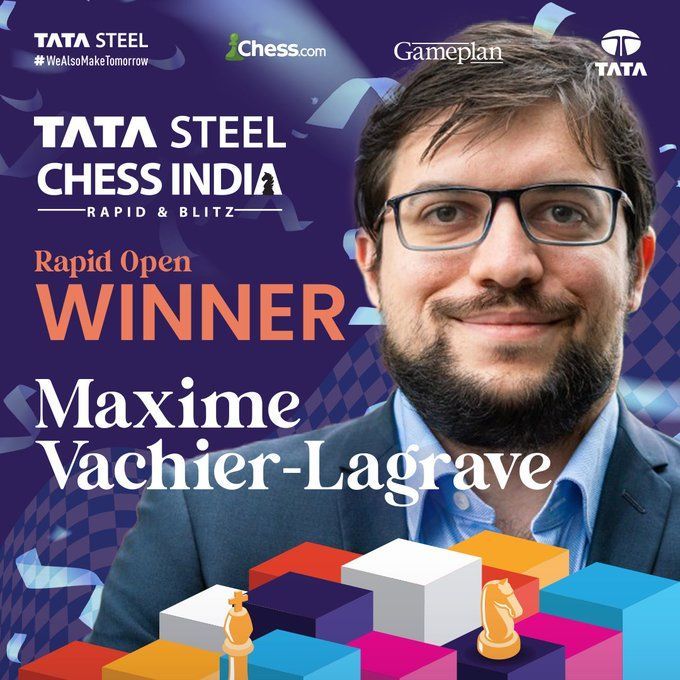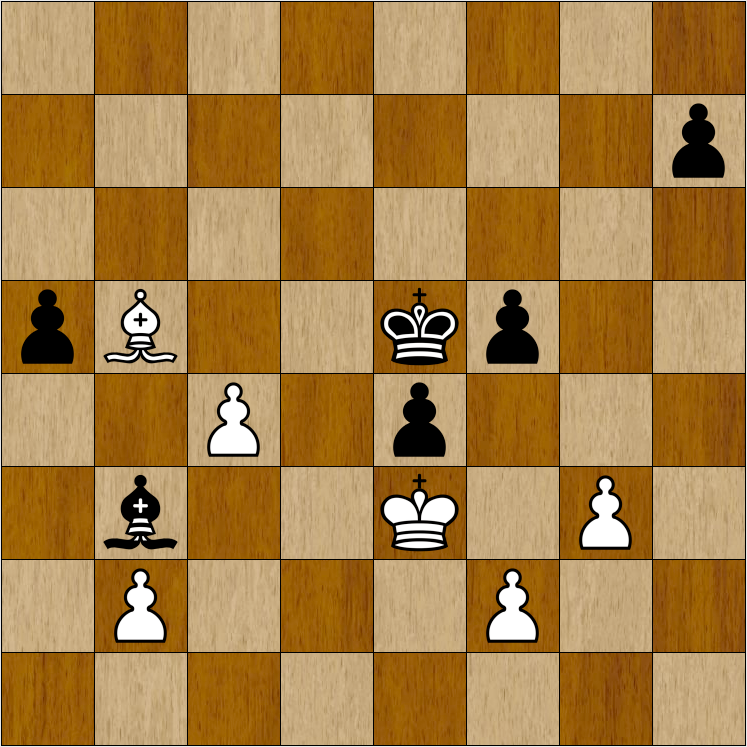An Old Man & His Bad Habits
Leading Danish chess author, coach and former British champion GM Jacob Aagaard once famously derided the club player’s favourite London System (1.d4 2.Nf3 3.Bf4) as “the Old Man’s Bad Habit, not dangerous and not very interesting” - but the opening once exclusively associated with the greybeards has turned into a potent weapon for one of the early leaders in the US Senior Championship.
The event, being held at Saint Louis Chess Club, not only sees the stars of yesteryear doing battle, but a trifecta of generational national titles up for grabs that also includes the US Junior Championship and the US Girls' Junior Championship - but making the early running in the venerable US Senior Championship proved to be GM Max Dlugy, who used the London System to good effect to spring into the early joint-lead on 3.5/4 with GM Melik Khachiyan.
The London System is the ideal opening for those who do not wish to get heavily involved in a sharp, theoretical duel, nor to explore reams of opening theory, but prefer to simply complete their development in a solid, triangular non-confrontational way. The set-up of d4, Nf3, Bf4, e3, h3 and c3 can indeed be frustrating to play against - and this makes it an ideal opening not only for the busy club player but also at senior level.
I suppose if we are being pedantic about it, then 2.Bf4, as seen in today’s game, is not the London System, but rather the Mason Attack, named after James Mason; no, not the Hollywood actor, but rather the great Irish-born British/American player who in the late 1880s was considered to be one of the world's best half-dozen players in the world - but invariably most games starting with Mason's eponymous 2.Bf4 tend to quickly transpose to “the London” with an early Nf3.
While the first recorded game was Labourdonnais-MacDonnell, London 1834 - which also started with 1.d4 2.Bf4 - it only truly evolved as an opening through Mason’s early championing of it, before reaching the pinnacle of recognition and development in theory praxis through its wide use during the great London International Tournament of 1922.
But what’s in a name? And indeed, for over half a century it was simply regarded as being a "Queen's Pawn Opening", and only really receiving its metropolis nomenclature through the publication in the late 1970s of Tim Harding’s Batsford opening book,
Colle, London and Blackmar-Diemar Systems, with the Irish author being among the first to coin it "the London System" in print.
GM Maxim Dlugy - GM Alexander Shabalov
U.S. Senior Championship, (4)
A45: Mason Attack/London System
1.d4 Nf6 2.Bf4 d5 3.e3 e6 4.Nd2 Bd6 5.Ngf3 As usual in the Mason Attack, invariably we reach the London System via a quick transposition. 5...O-O 6.Bd3 c5 7.c3 There are two-ways to play the London after ...Bd6 - one way is to retreat the bishop with Bg3, and the other, more interesting try for White, is to allow the exchange of the bishop on f4 and use the total control of e5 to be the fulcrum for your attack, as happens in this game. 7...Bxf4 8.exf4 cxd4 9.Nxd4 White doesn't want to be lumbered with an isolated queen's pawn early doors - what Dlugy intends first is Nd2-f3 followed by Re1 with a total grip of the all-important e5-square. 9...Nc6 10.N2f3 Qc7 11.g3 b6 12.O-O Bb7 13.Re1 Rad8 14.Ne5! g6 With White having a firm grip of the e5 square, now he can allow the isolated queen pawn, not fearing 14...Nxd4, as after 15.cxd4 White will be following up with Qa4 and Rac1 and promising play. 15.h4! Shabalov's last move was like a red rag to a bull for Dlugy, as suddenly the "boring opening" takes a turn for the vicious with the Caveman-lunge ! 15...Nxe5 16.Rxe5! Threatening a potential h5 sacrifice. 16...Rfe8 17.Re3
With the vital e6-pawn protected (and a little escape 'luft' created for the Black king through f8 and e7), not so dangerous now is 17.h5 Nxh5 18.Rxh5 gxh5 19.Qxh5 as Black has 19...f6 (Definitely not 19...f5?! 20.Bb5 Re7 21.Re1 Bc8 22.Nc6 Rf8 23.Nxe7+ Qxe7 24.Qd1! and Black faces a rather awkward defence with Qd4 and Re5 coming) 20.Bb5 Re7 21.Re1 a6 22.Bd3 Bc8 23.Qh4 Rf8 24.Qg4+ Kh8 (Bad is 24...Rg7? 25.Nxe6! Rxg4 26.Nxc7 and the position is not something Black can easily defend with so many weak and vulnerable pawns on the board) 25.Nxe6 f5! 26.Bxf5 Qd6 27.Re5 Rxf5! forcing White to seek the bailout with 28.Qxf5 Rxe6 29.Rxe6 Qxe6 30.Qf8+ Qg8 31.Qf6+ Qg7 32.Qd8+ and a perpetual. 17...e5 18.Rxe5 Rxe5 19.fxe5 Qxe5 20.Bf1! A clever, strategic full retreat from Dlugy, with the intention of a later Bg2 and pressure on the IQP. 20...Re8 21.Qa4 Another deft little touch from Dlugy, as it forces Shabalov to compromise his queenside pawns a little, that become a later target in the endgame. 21...a6 22.Qb3 Qd6 The only move, when you take into consideration that 22...b5? 23.a4! and Black's queenside collapses with the potential loss of pawns. 23.Rd1 Bc8 24.Qc2 Qe5 25.Qe2 Qd6 26.Qd2 Qe5 27.Nc2 Another nice little touch with Black having removed his bishop from defending the IQP, as Dlugy looks to increase pressure on the d5 pawn with Ne3 and Bg2 etc. 27...a5 28.Qd4! The more pieces that are exchanged now, the bigger White's endgame advantage becomes, as Black's queenside pawns quickly become liabilities. 28...Qxd4 29.Rxd4 The scene is set for an intriguing endgame tussle. There's not much in the game, but White has a little edge as it all becomes "awkward" for Black defending d5. 29...Kf8 30.Ne3 Re4?! Nobody likes being pinned down to a long-term defence of an isolated queen's pawn but, on reflection, more resilient would have been 30...Re5 31.Bg2 Be6 and it is not easy to see how White can formulate a winning breakthrough. 31.Rxe4 dxe4 32.Nc4 Be6 33.Nxb6 Bxa2 34.Bc4! Taking full advantage that Shabalov can't trade bishops, as 34...Bxc4 35.Nxc4 a4 36.Nb6 and the N+P ending is doomed for Black. 34...Bb1 35.Kf1 Ke7 36.Nd5+ Nxd5 37.Bxd5 If it were a bishop of opposite-colour ending, then you could probably bank on a draw soon, even if Black loses a pawn - but here, with the bishops being of the same colour, with all of Black's kingside pawns on white squares, and with a 2-1 queenside pawn majority, White does have genuine winning chances and rightly presses on. 37...f5?! Tempi can often be crucial in whether such endings can be drawn or even lost, and here, more logical was 37...Bd3+ 38.Ke1 f5 39.Kd2 Kf6 which would have been a more resilient defence, although White still retains some winning chances. 38.Ke2 Kf6 39.Ke3 Not easy finding the crucial calls coming up to the time-control territory, but more exact was 39.Bc4! with the threat of Kd2 and Kc1 forcing Bd3 and White winning the K+P ending after Bxd3 cxd3 and Kd2 picking off the pawn. This forces Black's hand somewhat, and now 39...Bc2 40.Kd2 Ba4 41.b4 axb4 42.cxb4 Ke7 43.Ke3 h6 44.b5 g5 45.hxg5 hxg5 46.g4! and a winning K+B endgame. 39...Ke5 40.Bf7! Looking to stop Black pushing his kingside pawns up the board with ...h6, ...g5 and ...f4+.
40...Bc2? How many times in chess have we witnessed a bad move played in haste on move 40 or even 41? Here, Shabalov just fails to see the subtle differences of what he played and what he should have played, the saving 40...Bd3! 41.h5 g5 42.h6 f4+ 43.Kd2 Kf6 44.Be8 Bc4 and Black more than easily holds the draw. 41.h5 gxh5 It was probably just dawning on Shabalov how stupid he'd been, realising only now that 41...g5 42.h6 f4+ (If 42...Kf6 43.Be8 Bb3 44.Kd4 Bc2 45.c4 is winning with the c-pawn running and the constant threat of Bg6 should the Black king move away from f6) 43.gxf4+ gxf4+ 44.Kd2! Vive la difference, as the French might say, as the tempi attacking the bishop proves decisive, as now 44...Bb1 45.Bg8 e3+ 46.fxe3 fxe3+ 47.Kxe3 is winning. But all is not lost for Shabaolv with 41.gxh5,,so long as he remains careful. Famous last words there! 42.Bxh5 Bb3 43.Be2 Bf7 44.Bb5 Bb3 45.c4 h5??
(see diagram) Shabalov truly has a “senior moment” as his h-pawn over-shots the runway! It's not easy to see how White wins after the correct 45...h6! 46.c5 Bf7! 47.Bd7 Bc4 48.c6 Bb5 and the train heading for the destination of Drawsville. 46.c5 h4 If 46...Kd5 47.Bd7 and White will systematically pick off all of Black's kingside pawns. 47.gxh4
I just love how nonchalantly Mr Engine chips in here that the most exacting, winning move 47.f4+! exf3 48.gxh4 Bd5 49.Bd7 Kf6 50.c6 etc. But there's nothing wrong with Dlugy's all-too-human winning plan.
47...f4+ 48.Kd2 Bf7
With passed pawns on both wings, Black is dead. The alternative was 48...Kd5 49.c6 Kd6 50.Kc3 Bf7 51.Kd4 much as in the game.
49.Kc3 Bh5 50.c6 Kd6 51.Kd4 Bf3 52.Ba4! 1-0
And a nice zugzwang to end the game, with Shabalov resigning as 52...Kc7 53.Bc2 nicely transposes down to a winning K+P ending for White with two extra kingside passed pawns.



